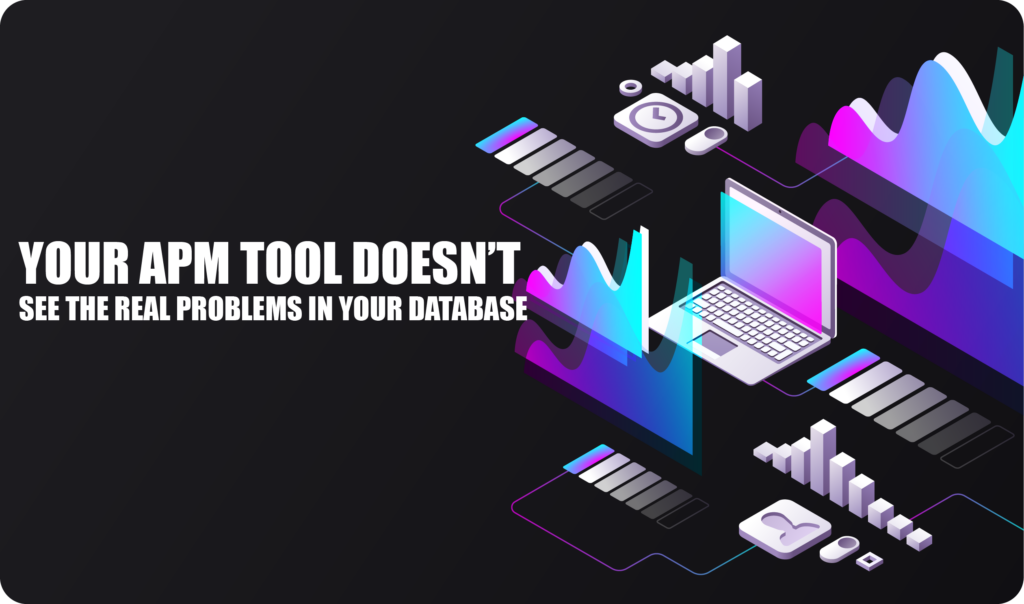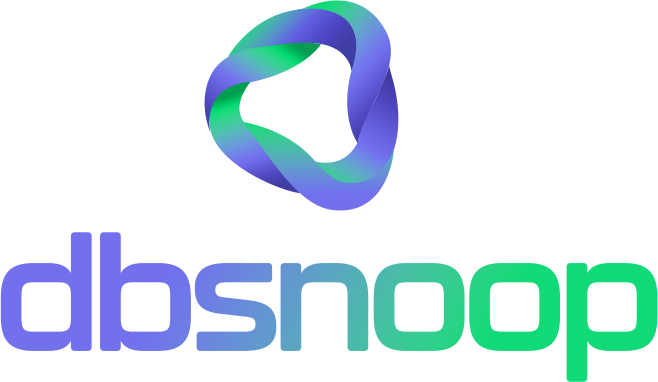

APM (Application Performance Monitoring) tools are essential for monitoring modern applications. They analyze response times, request failures, throughput, and more. But when a major database performance issue arises, these tools often fail to show what truly matters. The alert comes—but the cause remains hidden.
If you’ve ever heard your team say, “the APM didn’t show anything wrong,” yet the database was still choking, this content is for you. We’ll explain why this happens, the technical limitations of APM tools when it comes to databases, and what you can do to finally uncover what’s behind slowdowns, locks, and silent overloads.
The Technical Limits of APM Tools
APM tools are built for applications, not databases. They measure endpoint response times, track external calls, detect exceptions, and help understand the overall behavior of microservices. But that doesn’t mean they reveal what’s really happening inside the database.
What they usually can identify:
- If a query took longer than expected
- Which endpoint triggered the query
- Total execution time of the transaction
What they don’t show:
- Whether there was a lock or deadlock during execution
- Which part of the execution plan caused the slowdown
- Whether the query lacked an index or used the wrong one
- If the slowness was caused by an I/O bottleneck or excessive simultaneous connections
- How that query affected other concurrent processes
This gap prevents effective troubleshooting, especially in high-stakes, high-volume environments. The APM indicates there’s a problem—but not what to do about it. This frustrates both operators and decision-makers.
Many APM tools also can’t correlate multiple symptoms across different layers. The database might have high latency due to a spike in concurrent connections, but if the APM only reports high response time, the analysis remains incomplete. The team wastes time chasing the wrong leads.

This also hampers auditing and post-incident reviews. Without understanding the database’s role in a systemic failure, the technical team risks repeating the same mistakes. The lack of deep traceability compromises both fixes and prevention.
Finally, many APMs require complex customizations or paid plugins to offer even partial database visibility. That adds cost, maintenance overhead, and still doesn’t solve the core issue: deep, contextual performance analysis at the database level.
Why This Is a Serious Problem
Ignoring the real source of database bottlenecks can lead to poor decisions like:
- Scaling the application without fixing the cause (increasing costs and complexity)
- Adjusting timeouts or retries that only mask the problem
- Misguiding the team to focus on the wrong layer
Also, analysis without true database visibility slows down and reduces the accuracy of troubleshooting. Response time increases, and SLAs suffer.
Lack of real insights prevents proactive action. Without understanding what’s really going on in the database, you can’t predict the impact of changes, manage load intelligently, or prioritize optimizations that matter.
The Difference Database Observability Makes
That’s where dbsnOOp comes in. Our platform is purpose-built for databases—and goes beyond what any APM can show. It applies AI to detect patterns, identify anomalies, suggest fixes, and surface the technical data that actually matters.
With dbsnOOp, your team can:
- See in real-time which queries are causing overload
- Precisely identify locks, deadlocks, and I/O bottlenecks
- Detect performance regressions immediately after deploys
- Track execution plans for heavy queries
- Receive AI-generated optimization suggestions with ready-to-run commands
Plus, CI/CD integration allows you to catch critical changes before they hit production. The team can prevent incidents before they happen.
Another key advantage is cross-layer correlation. dbsnOOp understands when read latency is tied to background writes—or when resource contention in one instance triggers failures across the cluster. This holistic view makes the platform a powerful ally in root cause analysis.

Real Example: When APM Wasn’t Enough
A financial services company was using a popular APM tool. Dashboards showed average response times were normal—but users kept reporting slowness. The infrastructure team saw nothing unusual.
After implementing dbsnOOp, they found a single query—triggered asynchronously by a monthly report—was consuming 90% of the database’s CPU for 15 minutes at the same time every day. The query was poorly indexed, but this was never visible in the APM.
dbsnOOp’s AI suggested a simple index change and rescheduling of execution. The result was immediate: slowness disappeared, alerts stopped.
Another case involved an e-commerce app facing latency spikes during promotional events. The APM highlighted slow endpoints but didn’t explain why. dbsnOOp identified a surge in simultaneous database connections, leading to lock contention on an inventory table. Partitioning the table resolved the issue—something APM never would’ve revealed.
How to Combine APM and Database Observability Effectively
You don’t need to ditch your APM. The ideal approach is to complement it with a specialized database observability solution. While APM shows the symptom in the application layer, dbsnOOp reveals the root cause deep in your system.
Together, they deliver:
- Fast, accurate, and complete diagnostics
- Alignment between Dev, DBA, and SRE teams
- Significant reduction in troubleshooting time
- Proactive optimization based on real data
This combination can drastically lower Mean Time to Resolution (MTTR), prevent critical incidents, and improve operational efficiency—without adding complexity.
See Where APM Falls Short
APMs are great for surface-level insights. But to truly solve performance problems, you need to go deeper. That’s where advanced observability powered by dbsnOOp’s AI makes all the difference.
Don’t wait for users to scream to find the bottleneck. Find it first—with precision—and deliver performance that surprises your leadership team too.
Schedule a demo here.
Learn more about dbsnOOp!
Learn about database monitoring with advanced tools here.
Visit our YouTube channel to learn about the platform and watch tutorials.


